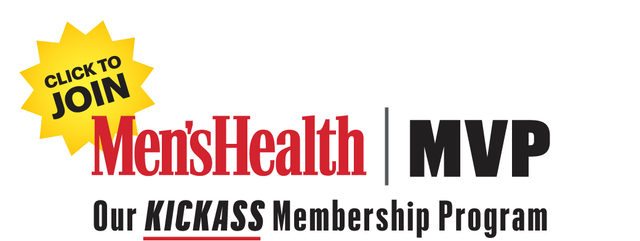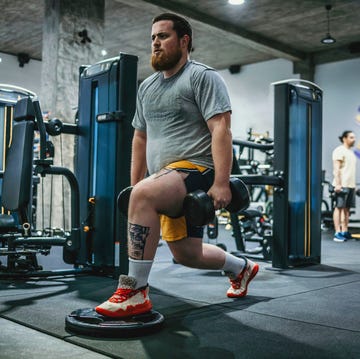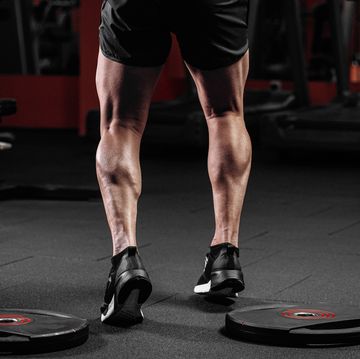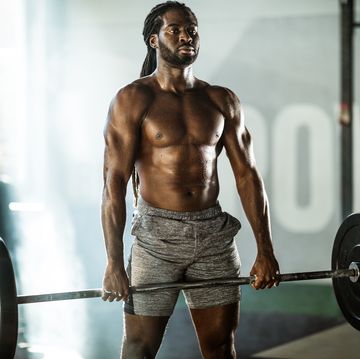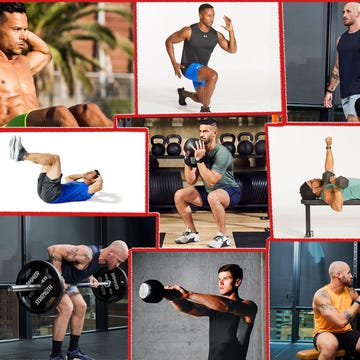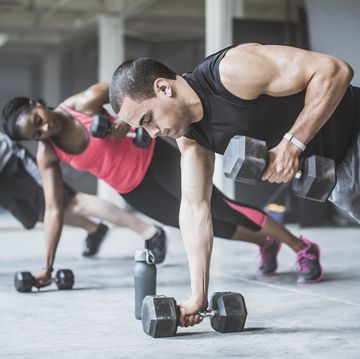Tight hip flexors and locked-up hips can be a major obstacle for your workouts, not to mention how uncomfortable you feel in your day-to-day life when you're feeling stiff. Thankfully, a simple hip flexor stretch can help to alleviate your discomfort.
But it helps to understand just how and why you're not feeling great before getting into the solution. There's a good chance you've felt this type of stiffness in your hips before, especially if you've spent a few consecutive hours on the couch. The moment you stand up, you feel tightness and restriction just below your pelvis. And no, this isn't a good thing.
Symptoms of Tight Hip Flexors
But hip flexor tightness is a common issue. And whether you're hitting the gym or not, it can cause you problems.
For everyday folks, tight hip flexors and locked hips lead to shaky posture and core imbalances that can lead to lower back issues. Gym-goers, meanwhile, can struggle to move laterally, and their overactive hip flexors may prevent them from getting the most out of key exercises like hanging leg raises and deadlifts and squats.
How to Loosen Tight Hip Flexors
That's why it's good to find time to loosen your hip flexors and hips, and you'll do that with this all-in-one mobility flow from Men's Health fitness director Ebenezer Samuel, C.S.C.S.
It's a series of moves designed to open your hips, but it does more than that too, says Samuel. "The forgotten thing in the chase for mobility is that you need stability with mobility," he says. "You can't blindly chase flexibility and mobility. You won't do that here."
Instead, while you open your hips, you reinforce key core principles and build midback stability too. Core control is key too. "By keeping your abs tight," says Samuel, "you'll actually challenge hip mobility and hip flexor mobility more, insuring that the motion you create comes from your hips, and not by shifting your spine."
Meanwhile, in addition to hips, you'll work valuable midback and shoulder stability. Reaching your arms overhead is key to that, says Samuel, as long as you do it right. "Squeeze your midback and back muscles to drive arms overhead," says Samuel. "But keep a tight core as you do this so you insure you're not arching your lower back or trying to arch through your thoracic spine."
It's all simple enough that you can do it anywhere (and should do it anywhere).
How to Do the Hip Mobility Flow
- Start in pushup position, core and glutes tight.
- Shift into downward dog, tightening your abs and straightening your legs and driving your butt high. This should stretch your hamstrings.
- Shift your right foot alongside your right hand, aiming for a perpendicular shin. Place your left knee and shin on the ground, toe pointed.
- Tighten your abs and glutes and drive your arms overhead.
- Place your hands on the ground and rotate your torso to the left, sitting into your left hip. Take this as deep as is comfortable.
- Tighten your core and drive your hands overhead again.
- Return to pushup plank position and repeat. Do 3 sets of 3-5 reps per side.
The best part about the entire flow: You can do it anytime you need to loosen up your hips and feel "all-around great," as Samuel says. "You're moving your body in ways it should move, so this isn't going to tax your nervous system or require recovery," says Samuel. "Do it multiple times a day.
Whenever you do it, though, take your time. "This isn't a race," says Samuel. "Think of taking a deep breath in every position, then moving on."
For more tips and routines from Samuel, check out our full slate of Eb and Swole workouts. If you want to try an even more dedicated routine, consider Eb's New Rules of Muscle program.
Ebenezer Samuel, C.S.C.S., is the fitness director of Men's Health and a certified trainer with more than 10 years of training experience. He's logged training time with NFL athletes and track athletes and his current training regimen includes weight training, HIIT conditioning, and yoga. Before joining Men's Health, he served as a sports columnist and tech columnist for the New York Daily News.

